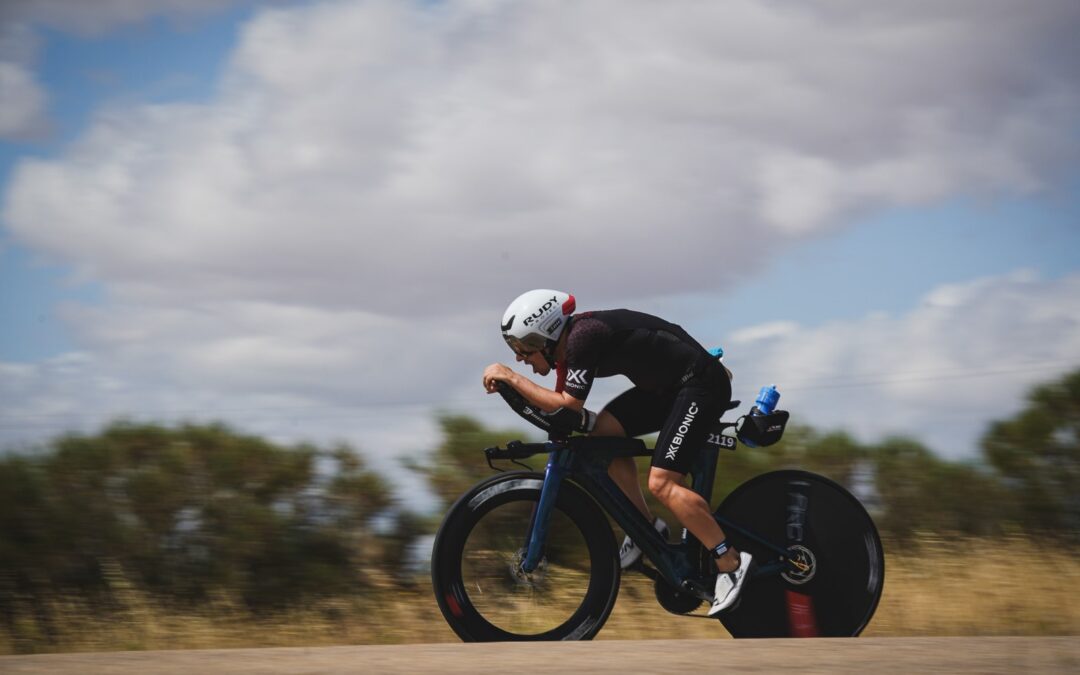As usual in this time of the season, we are thinking in how to improve our FTP cycling in the face of our next races. Lot of questions, lot of workouts trough trial and error and we usually forget the main way to get it, the base work.
That is easy, in the following report you could find how to manage your base work to focus in your FTP improvement. Including some specific workouts.

Lets how we can get a really improvement of your cycling FTP during your new season!
What is FTP?
Functional Threshold Power (FTP) is a metric in cycling that represents the highest average power a cyclist can sustain for a time till onset fatigue. It is often used as a reference point for training intensity.
FTP represents the boundary between aerobic and anaerobic energy systems. When a cyclist rides at or below their FTP, they should be able to sustain the effort for a relatively extended period. Going above FTP leads to increased reliance on anaerobic energy systems, resulting in quicker fatigue.
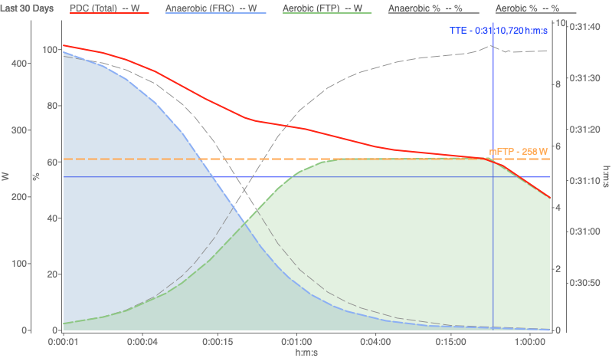
Dependent factors?
Between the main dependent FTP factors are;
- VO2Max – Maximal oxygen consumption, is a measure of the maximum amount of oxygen that an individual can utilize during intense exercise. It is often expressed in milliliters of oxygen per kilogram of body weight per minute (ml/kg/min).
- MLSS – Maximal Lactate Steady State. Represents the highest exercise intensity at which lactate production and removal are balanced, resulting in a stable or steady-state concentration of blood lactate. It is a key indicator of aerobic endurance and is often used in training programs for athletes. During exercise below MLSS, lactate production is matched by the body’s ability to clear it. Above MLSS, lactate accumulates in the blood. Training at or slightly below MLSS is considered an effective way to improve endurance performance, as it helps to enhance the body’s capacity to manage lactate and delays the onset of fatigue during prolonged efforts.
- EF -In sports, energy efficiency might relate to how well an athlete utilizes energy during physical activities. Efficient energy utilization can be crucial for endurance sports and long-duration activities.
How to start?
Before to start with the specific work to improve FTP, we should to assume that we have to work at least between 4 and 6 weeks in zone 1 and zone 2.
Then we could start with the specific work.
Below you can see an example.

- In this step we should work in tempo zones, SST (sweet spot tempo) and extensive zones. Remember previous this step, we should have done the base work, that means, rides with IF below 0,7 and evaluate with a stable EF.
- Work in intensive zones, FTP and FRC zones. In this step is usual to find some differents methods.
-
- Classic
- Polarized

Some examples into the classical training model are:
- 2 x 10 minutes in Tempo @300w
- 2 x 15 minutes in Tempo @300w
- 2 x 20 minutes in Tempo @300w
And then we can increase time and power, that means;
- 2 x 10 minutes in Tempo @310w
- 2 x 15 minutes in Tempo @310w
- 2 x 20 minutes in Tempo @310w
With some easy days and other days into zone 3.
Below you can see a picture about what is extensive and intensive in your power curve.
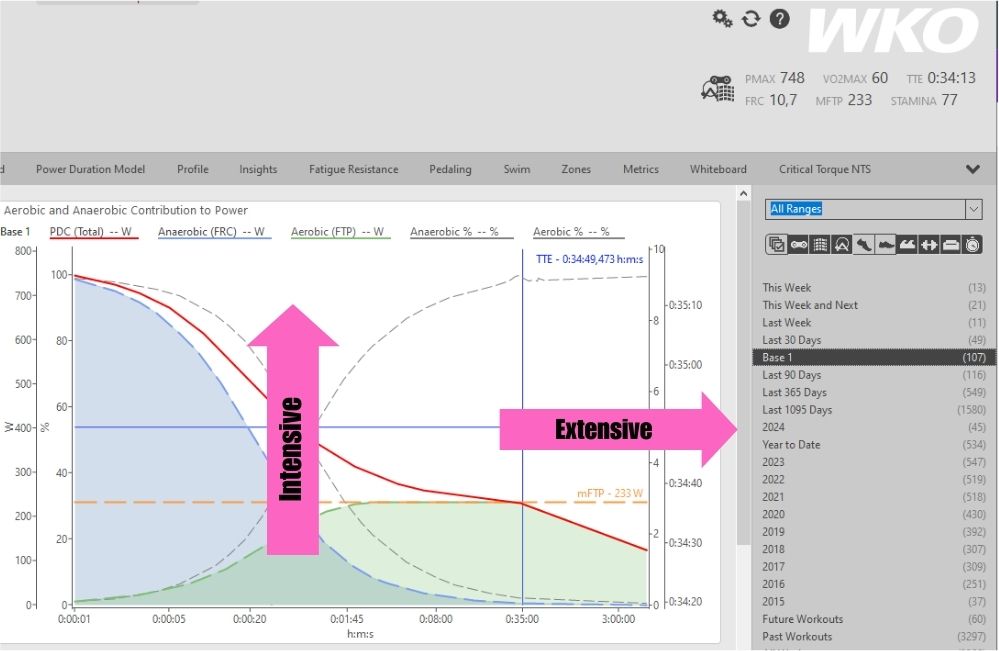
On another hand, in polarized training model, you are focus in Zone 1 (easy days) in combination with Zone 3 (hard days) without zone 2
Some examples are;
- 5 x 2 minutes in Tempo @300w
- 5 x 2 minutes in Tempo @310w
- 5 x 2 minutes in Tempo @320w
And then we can increase time and if its possible, the power. That means;
- 5 x 3 minutes in Tempo @300w
- 5 x 3 minutes in Tempo @310w
- 5 x 3 minutes in Tempo @320w

3. After some weeks working on FTP and FRC we could start the work in VO2Max. In this step your FTP are close to VO2Max, so that means we should do some intervals in V02Max to elevate your FTP roof. Some classical workouts to work VO2Max are:
- 5 x 2 minutes @105% of FTP
- 5 x 3 minutes @105% of FTP
- 5 x 5 minutes @105% of FTP
- 10 x (30″ @115% FTP with 30″ rest)
4. In the last step, we will focus in race pace, motor paced or specific work for triathletes. We should to be careful with this step, because it is too easy starts in over training.
But, what is the exact moment to phase shift?
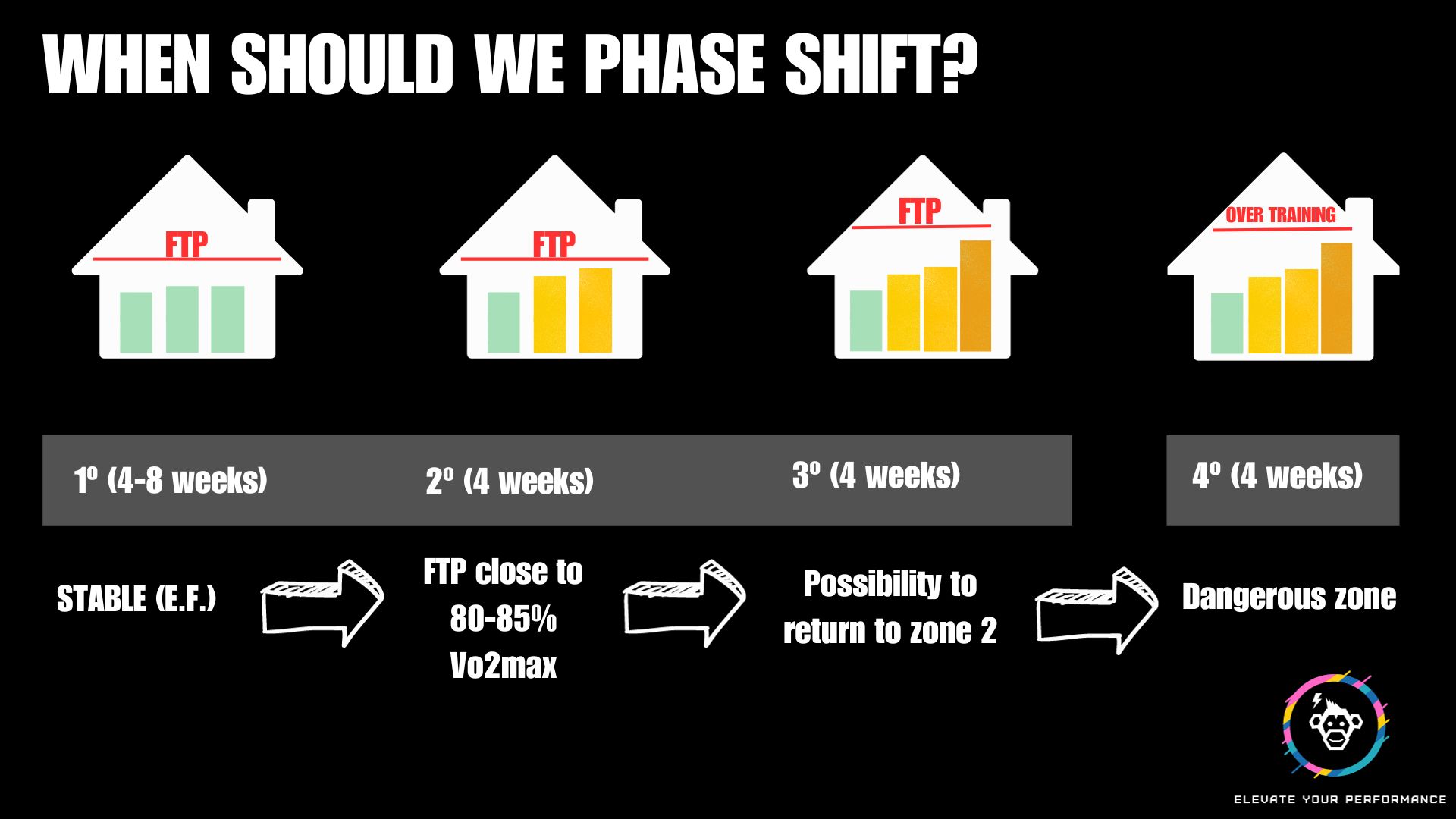
- Stable E.F – Maybe you’re thinking, what is E.F.? How to see? How to manage? Below an example
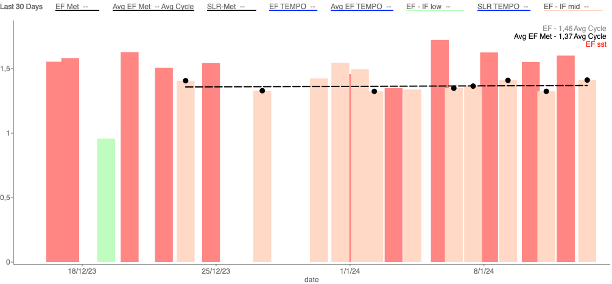
EF is calculated by NP (Normalized Power) / HR (Heart Rate)
In the picture you can see the EF trend line. When EF is stable during some workouts/weeks, is the moment to phase shift to the second step.
In the first step we should work in tempo zones, SST (sweet spot tempo) and extensive zones. Remember previous this step, we should have done the base work, that means IF below 0,7 and evaluate with EF as well.
2. FTP close to 80-85% of VO2Max. Into the step 2, we will working on intensive zones, tempo, FRC and FTP. We starting to fell better and strong and as soon as our FTP is close to 80-85% in comparisson with our VO2Max we should to phase shift.
It can be evaluated with WKO5, below an example.

